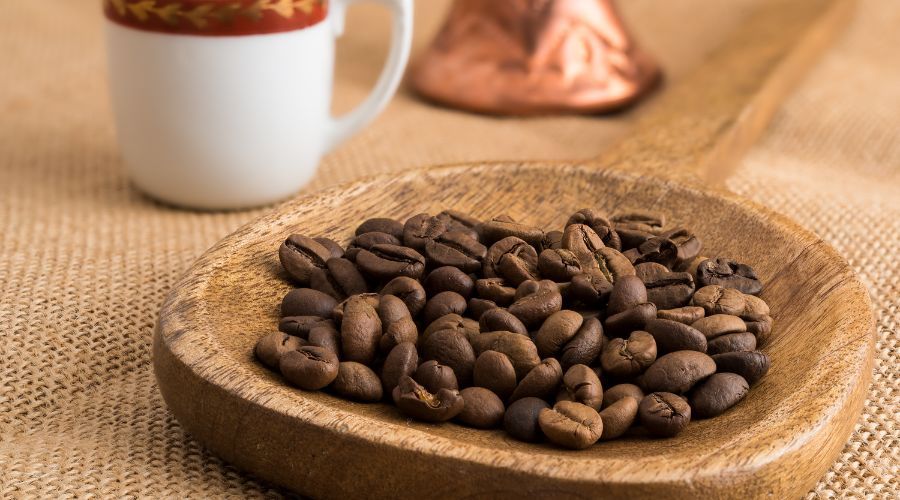- +1800-640-0788
- sales@dhkusa.com
Can I Grind Coffee Beans In A Blender?

So, you've stumbled upon a bag of whole coffee beans and feel a bit rebellious. The coffee grinder is nowhere to be found, but fear not! Your trusty blender might just be the unsung hero in your quest for that perfect cup of joe. But, can you really grind coffee beans in a blender? Let's dive into the gritty details.
The Blending Conundrum: Grinding Coffee Beans?
Coffee fans might cringe at the thought of using a blender for their precious beans. And, there's a good reason for that. The grind's consistency is key to coffee's taste. But, blenders are not made for this task. But, desperate times call for desperate measures. Sometimes, a blender is all we've got.
The Nitty-Gritty: Can Your Blender Handle It?
Before you embark on this unconventional journey, let's assess your blender's capabilities. Not all blenders are equal. Some might struggle with the toughness of coffee beans. Here's what to consider:
1. Blade Sharpness: Coffee beans are tough nuts to crack, quite literally. Ensure your blender blades are sharp enough to pulverize the beans effectively.
2. Motor Power: A robust motor is your best friend here. If your blender is more of a smoothie maker than a power player, you might be in for a bumpy ride.
3. Container Size: Grinding coffee beans requires some space. Make sure your blender's container is big enough. This allows for proper circulation and grinding.
The Grind Game: Achieving the Right Consistency
Assuming your blender passed the test, the next challenge is to achieve the right grind. Coffee beans demand a specific coarseness or fineness, depending on your brewing method. Let's break it down:
1. Espresso Grind
For that rich, concentrated shot of espresso, aim for a fine grind. Here's how to nail it with your blender:
• Pulse It Right: Use short pulses to prevent overheating. You want a powdery consistency without turning your beans into a paste.
• Sieve and Repeat: After each pulse, sieve the grounds to separate the fine from the coarse. It's a bit tedious, but it gets the job done.
2. Drip Coffee Grind
A medium grind is the sweet spot if you're more of a drip coffee fan. Your blender can play ball here too:
• Blend in Intervals: Opt for longer pulses to achieve a coarser grind. Stop, shake, and pulse again until you hit that sweet medium ground.
• Check and Adjust: Regularly check the coarseness and adjust as needed. It's a bit of a hands-on process, but coffee-making is an art, not a science.
3. French Press Grind
For the French press enthusiasts, a coarse grind is the key. Your blender can handle this with a few tweaks:
• Blend on Low: Use the lowest setting to avoid turning your beans into powder. Aim for a consistently coarse texture.
• Embrace Imperfection: French press lovers appreciate a bit of inconsistency. Embrace the charm of a few larger particles in your grind.
Pitfalls to Avoid: Common Mistakes in Grinding Coffee with a Blender
Before you embark on your blender-powered coffee grinding adventure, beware of these pitfalls:
• Overheating the Beans: Blending makes heat. It changes coffee's flavor. Pulse intermittently to avoid a heated disaster.
• Uneven Grinding: Blenders may struggle with achieving a uniform grind. Keep an eagle eye on the consistency and adjust as necessary.
• Bean Overload: Respect your blender's capacity. Overloading it with beans can lead to uneven grinding. It can also damage your appliance.
The Verdict: Blender or Bust?
Is it possible to grind coffee beans in a blender? The answer is a cautious yes. In a pinch, your blender can save the day, but it comes with its set of challenges. If you're a coffee purist, investing in a quality grinder is still the gold standard. However, the blender can be your hero for adventurers and occasional coffee emergencies.
Grinding Beyond Boundaries
Coffee-making is a dynamic journey, and sometimes you need to think outside the coffee pot. While a blender might not be the first choice for grinding beans, it's a versatile tool that can surprise you. So, give your blender a chance to shine next time you can't find your trusty grinder. You might stumble upon a unique grind that becomes your secret coffee weapon. Happy brewing!

